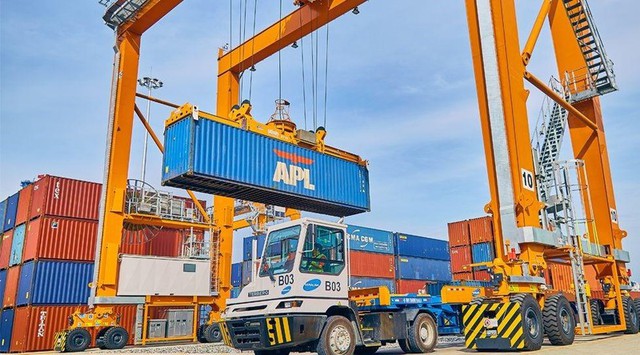Southeast region to look to well-connected logistics system
VGP - The Ministry of Transport has recently rolled out a plan on developing a modern and well-connected logistics system in the Southeast region.

Illustration photo
The plan targets to develop logistics infrastructure until 2030, with a vision towards 2045 for the five localities of Dong Nai, Ba Ria – Vung Tau, Binh Duong, Binh
A national- and international-level system for logistics will be formulated in association with current seaports, airports, international border gates, key economic corridors, and inter-regional trading routes.
Specifically, the ministry will work with related localities to create an air logistics center linked to Long Thanh International Airport as well as a port logistics system in Ba Ria – Vung Tau province and HCMC, especially at deep-water seaport in Cai Mep – Thi Vai area.
It will mull over feasible support measures to improve the operation performance of transport trading floors while encouraging transport businesses to implement advanced technologies in monitoring their own vehicles and actively participating in road freight trading floors in order to optimize current routes and minimize empty vehicle moving for cost-effectiveness sakes.
The ministry will also try to boost the competitiveness of domestic transport enterprises and promote the application of modern technologies to improve service quality.
Prominent logistics player in Asia
With a population of close to 100 million, a consistent GDP growth rate of over 5%, and a strong and stable regulatory and investment climate, Viet Nam offers opportunities for high growth in transportation and logistics.
Viet Nam’s logistics industry is gaining recognition in the global market, with growing expectations that it will emerge as a “rising star” in Asia.
The industry witnessed an annual growth of 14-16 percent which has solidified its position as one of the fastest-growing and most stable sectors in the country with a total value of US$40 billion to US$42 billion a year.
According to Agility Emerging Markets Logistics Index 2023, Viet Nam moved into the top 10 of the Index among 50 global markets, advancing one position compared to the previous year.
Agility’s ranking is based on four criteria including domestic opportunities, international opportunities, business fundamentals and digital readiness.
This recognition can be attributed to several factors, including the country’s strategic location, favorable investment policies and the Government’s ongoing efforts to improve infrastructure and streamline regulations.
In 2022, Viet Nam ranked 11th among 50 emerging logistics markets in the world.
However, the logistics industry in Viet Nam has not developed adequately due to the lack of connections between logistics service providers and manufacturers, traders and import-export businesses. Experts in Viet Nam's logistics sector stressed the critical need for greater collaboration with enterprises./.
